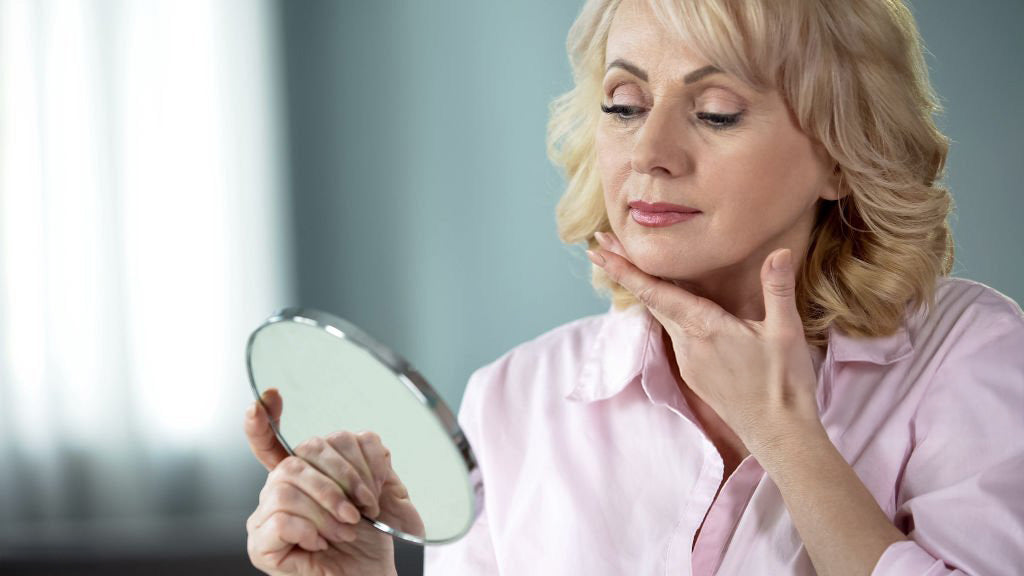As women age, especially during the perimenopausal and menopausal years, their bodies undergo significant hormonal shifts. One of the most impactful changes is a drop in estrogen levels. Estrogen plays a critical role in maintaining youthful, healthy skin, and its decline can be visibly noticeable in the face. But what does a low-estrogen face actually look like?
The Role of Estrogen in Skin Health
Estrogen receptors are found throughout the skin and play a key role in collagen production, hydration, elasticity, and even wound healing. As estrogen levels decrease with age or due to certain medical conditions, the skin's natural structure and function begin to deteriorate. This condition is sometimes referred to as estrogen-deficient skin.
Facial Characteristics of Low Estrogen
-
Fine Lines and Wrinkles One of the most visible signs of estrogen deficiency is the increased appearance of fine lines and wrinkles. Estrogen supports the production of collagen and elastin—proteins responsible for skin firmness and elasticity. Without sufficient estrogen, the skin becomes thinner and more fragile, accelerating signs of aging.
-
Loss of Skin Firmness Low estrogen can result in a noticeable decline in skin firmness. Facial contours, especially around the cheeks and jawline, may begin to sag as collagen levels drop and skin loses its structural support.
-
Dryness and Dehydration Estrogen also helps maintain the skin's moisture barrier. When estrogen levels drop, the skin can appear dry, rough, and flaky. This dehydration further emphasizes lines and makes the skin look dull.
-
Dull or Uneven Skin Tone Estrogen has a role in maintaining healthy blood flow to the skin. Reduced levels may contribute to a sallow or pale complexion. Additionally, changes in melanin production can lead to age spots or hyperpigmentation.
-
Thinning Skin Estrogen-deficient skin tends to become thinner, making blood vessels more visible and increasing the risk of bruising and injury. This thinning also makes the skin more sensitive to environmental stressors.
-
Facial Hair Changes As hormone levels shift, some women may notice unwanted facial hair growth, particularly on the chin or upper lip. This is often due to the imbalance between estrogen and androgens (male hormones).
-
Increased Skin Sensitivity Hormonal changes can impair the skin barrier, making it more susceptible to irritation, rashes, and allergic reactions.
Hormonal Symptoms That Accompany Facial Changes
-
Hot Flashes and Night Sweats: These common menopausal symptoms can also affect skin hydration and comfort.
-
Vaginal Dryness and Discomfort: A systemic sign of low estrogen, vaginal dryness often occurs alongside changes in facial skin.
-
Hair Loss and Weight Gain: Thinning hair and changes in fat distribution (especially around the face and midsection) are also indicators of declining estrogen.
Medical Perspective on Estrogen-Deficient Skin
According to research in peer-reviewed sources such as the International Journal of Women's Dermatology, estrogen-deficient skin is a clinically recognized condition that requires targeted treatment. Experts in cosmetic dermatology and women’s health emphasize the importance of addressing hormonal balance to manage both the visible and underlying signs of estrogen deficiency.
Treatment Options and Solutions
-
Hormone Replacement Therapy (HRT): For women experiencing moderate to severe symptoms, HRT can help restore estrogen levels and improve skin quality. This treatment should always be discussed with a qualified healthcare provider.
-
Topical Estrogen Creams: These are often prescribed to improve estrogen-deficient skin, particularly in sensitive areas. Topical estriol or estradiol may enhance skin thickness, moisture retention, and collagen production.
-
Targeted Skincare Products: Products containing hyaluronic acid, peptides, and antioxidants can help support aging skin and combat signs of estrogen loss.
-
Healthy Lifestyle Choices: Staying hydrated, maintaining a balanced diet, avoiding smoking, and using sunscreen daily can all support healthier skin.
-
Professional Medical Advice: A board-certified dermatologist or a healthcare provider specializing in hormone health can recommend a tailored treatment plan based on your individual needs.
Conclusion
A "low estrogen face" may be characterized by sagging skin, fine lines and wrinkles, dryness, dullness, and other signs of aging. These changes are not just cosmetic—they reflect a deeper hormonal imbalance that can impact a woman’s overall health. Understanding the relationship between estrogen and skin can empower women to seek appropriate treatments, from topical therapies to hormone replacement options, for healthy aging and radiant skin.
Always consult a licensed healthcare provider for diagnosis and treatment of any hormone-related condition or skincare concern. This article is for informational purposes only and is not intended to replace professional medical advice.



